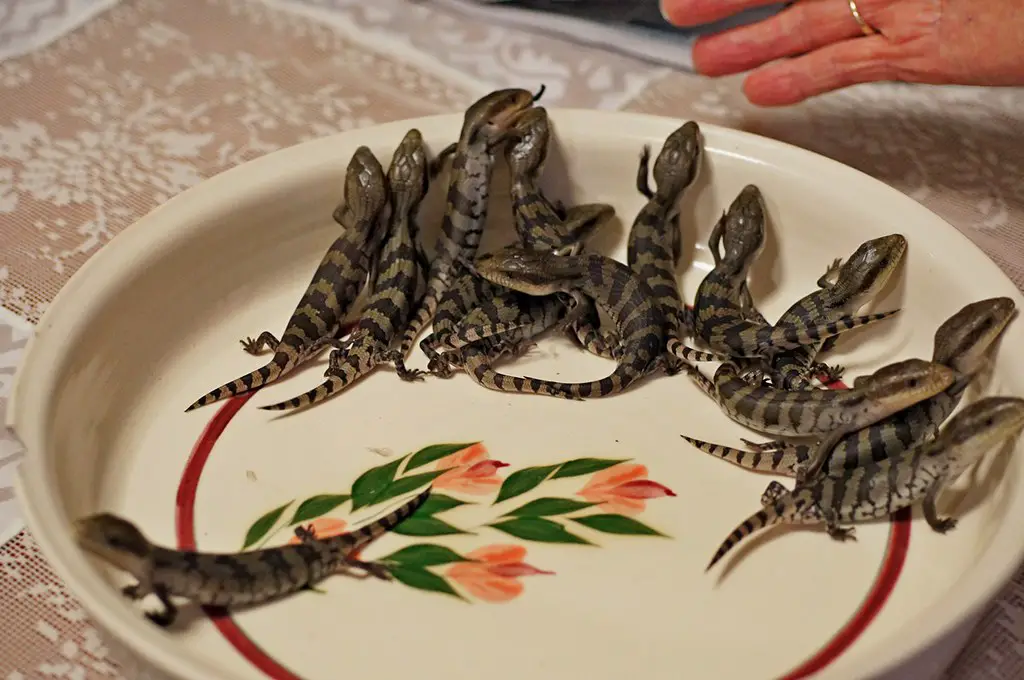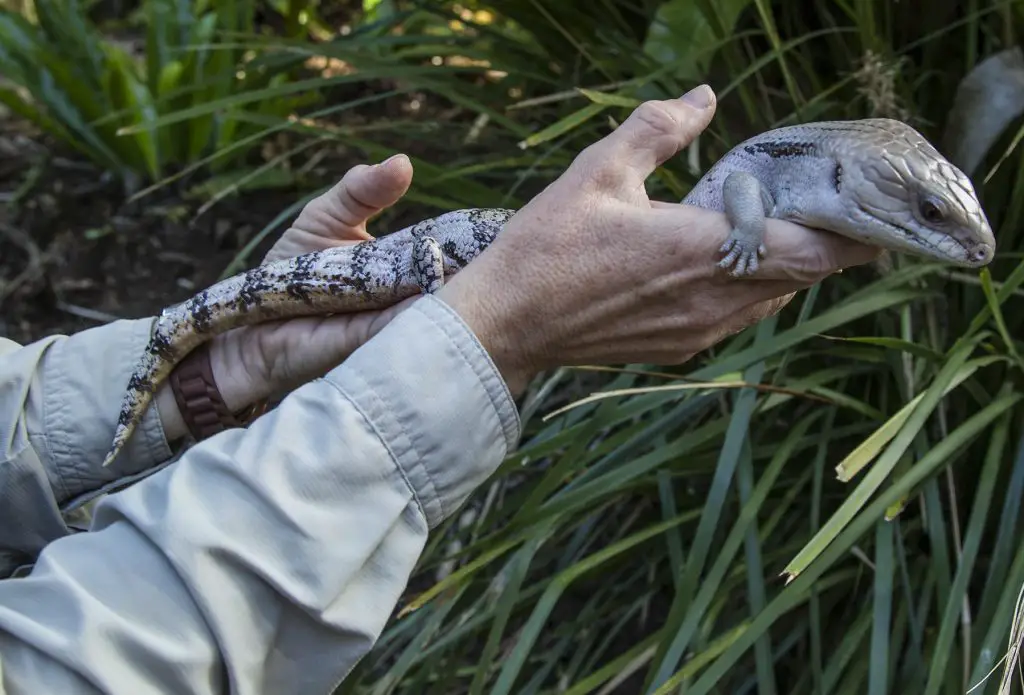Why bother? Does telling the sex of your skink matter? Hang on! Let’s help you.
First understand that, unlike some species of reptiles that display a high degree of sexual dimorphism, both male and female blue tongue skinks look almost the same.
And unless you’re a breeder or intended to become one, sexing your blue tongue skink may not concern you. Whether you know it or not, that doesn’t determine how well you’ll take care of your skink or how good a breeder you’ll be.
But if you take fancy in the beautiful exploration of crossbreeding or for general knowledge, then this topic is a must understand. Thus, this article, a must-read for you.
In this article, we’ll cover:
- How you can sex your blue tongue skink,
- At what age should you attempt sexing your skink and
- Every other thing you need to know about sexing your skink.
This article has been reviewed by Dr. Dilber. Read more about our knowledge control process here.
Contents
How Old Does A Blue Tongue Skink Have To Be To Tell Its Gender?
Aside from breeding behaviors and social interaction, there is almost no difference between male and female blue tongue skinks. They are quite similar both in characters and temperaments.
Skinks that are less than 8 months old will not exhibit breeding behaviors. Also, some of the physical factors that will be discussed in the latter part of this article cannot be accurately determined in younger skinks.
So at what age should you start observing to tell its sex? From 8-12 months old and above.
In some species that grow faster, you might start seeing seminal plugs for males when they are about 6-10 months old.
How Can You Tell How Old Your Blue Tongue Skink Is?

Except you did own your skink right from birth, it’s difficult to tell how old it is. For blue tongue skinks that are gotten from the wild or in the market, this is one way of telling the age- “by size”.
Baby skinks at birth on average will measure between 6-8 inches long. There can be some variations to this based on species. After birth, the speed with which they grow has so many varying factors making it nearly impossible to tell their age simply by size.
New to blue tongue skink? Check out the blue tongue skink care sheet now! We had listed out all the things you need to know about blue tongue skinks as pets. Check it now!
Nonetheless, it takes an average of 12-months to 2-years (at most 3 years) for a skink to grow to full maturity. At maturity, an adult skink will measure between 18-28 inches in length. This also is dependent on species.
The size of the blue tongue skink depends on various factors such as diet, health status, and habitat. So, it is difficult to tell the actual age of blue tongue skink by its size. However, one can guess the age according to the size.
In general, using size to tell the age of a skink is only a cue. Some babies reach adult size within 6 months after birth. But that doesn’t make them adults or mature. While others take a couple of years as indicated earlier.
How To Determine The Sex Of Your Blue Tongue Skink
Having a male or female skink should not be the best way to choose if you are planning to get one for the first time. Here online you’re likely going to read tons of articles telling you that male skinks are explorative while females are more calmer.
This isn’t entirely true. Just like humans, blue tongue skinks are living beings too. They are so different both in character and personality.
While some easily get frightened, some are lazy, some are adventurous, and quite a few are aggressive. There is a high tendency that your skink will be different.
So, when choosing a species as pet. Male or female is not the case. The thing owner needs to consider is the species character and temperaments.
So what do you do? I advise you to pick a skink based on health background and species.
For other blue tongue skink enthusiasts who have had their skinks for some months or years, how do you tell the sex?
Here are how:
But before we delve into the most reliable clear-cut methods of sexing blue tongue skinks, let’s look at some common physical factors owners use to tell the sex of their skinks.
It’s important to note that all the physical factors to be discussed in this section are mere hints. They are not always accurate enough to be relied upon. Especially when the skink is still very young (below 12-months).
Those physical factors include:
- Body size, shape, and length.
- Shape of head and tail.
- Weight.
Visual Inspection

- At birth, male blue tongue skinks are generally rectangular across the center of the body (somewhere between the forelegs and hind legs). While the females are usually ovate (egg-shaped).
However, this is only visibly seen once they are birthed. As they grow to adulthood, this rule tends to fade out.
- The weight of blue tongue skinks also has relevance in telling their sex. The weight of male blue tongue skink is commonly a bit higher as compared to a female. Adult males are generally heavily built and have bigger broader heads than the females who have narrower heads. But again this technique of sexing isn’t completely accurate and reliable.
- Going by size, female skinks tend to have slightly longer bodies than males no matter the species. This is apparent when you look at the distance between the fore and hind legs.
And also the shape of their tails. The tails of female skinks tend to become thinner to a point over a longer distance than in males.
Nonetheless, there’s a challenge with this method. You’ll need to compare three or more skinks to accurately evaluate this physical characteristic. So a breeder that has only one skink cannot use this method.
New to blue tongue skink? Check out the blue tongue skink care sheet now! We had listed out all the things you need to know about blue tongue skinks as pets. Check it now!
In general, sexing based on the physical traits of blue tongue skinks is not accurate. It’s also difficult to tell the sex of immature or younger skinks without having to manually evert the male sex organs.
This procedure can cause harm to the skink if not accurately done.
Most Reliable Sure-fire Methods Of Sexing Blue Tongue Skinks
Everting Hemipenes When Pooping
Male blue tongue skinks have reproductive organs inverted into the tail known as hemipenes. They evert hemipenes while mating. So, observing hemipenes confirm the gender of the blue tongue skin.
Hemipene is a term for the male reproductive organs. These paired sex organs are usually located inside the skink’s body, right above the tail where you have the vent (cloaca).
Telling sex using this technique involves applying a little bit of pressure to the underside of the tail in the direction of the cloaca.
If the hemipenes pop open then the skink is a male. But if nothing pops out, it’s mostly likely your skink is female.
Note the choice of words “most likely”. I used this because some skink’s hemipenes can be difficult to get it popped out.
Most times male skinks evert their hemipenes when pooping. It’s usually visible enough to be seen.
Semen/Seminal Plugs In The Excrement
The absence or presence of seminal plugs is another clear-cut technique for determining sex in adult blue tongue skinks.
Seminal plugs are dried semens that stick to the invaginated hemipenes of a male skink as a proof of its sexual maturity and productivity. Seminal plugs are usually small, white, and translucent in color measuring about 2.5cn in length.
Male blue tongue skinks produce seminal plugs inside the hemipenes and sometimes a lizard will eject these plugs. You can find these plugs in the cage or water bowl. Seminal plugs are white to grey in color.
A sexually active male will often release these plugs almost every day, and when stooling. But proving that your skink is male or female using this method can be limited by the type of substrate you use.
If you’re using substrates such as bark chippings or the floor of the enclosure is covered with leaves, the seminal plugs are most likely to get lost among the substrates.
Breeding Behavior
One of the few reliable hints in determining sex in mature blue tongue skinks is by observing their breeding behavior or social interaction.
Blue tongue skinks of the same sex are combative and antagonistic with each other. Especially the males.
The males will start fighting, hissing, and biting each other. As part of their defensive and territorial nature, they will move sideways to look bigger.
But in mixed-gender pairing, the males will not hesitate to pursue and attempt to mount on the females. However, like with other methods; a breeder with only one skink cannot experiment with this.
Performing A Contrast X-Ray Scan
Contrast radiography or endoscopy is another sure-fire way of sexing your blue tongue skink.
This can only be done by an experienced veterinarian. Your vet will insert a contrast dye into the skink’s cloaca and then take the x-ray scan.
Since the hemipenes are usually hidden inside the body, the x-ray scan is to check for hemipenes in males or follicles in females.
Owing to radiation from the x-ray scan, this method isn’t medically recommended.
Conclusion
As hinted earlier in the article, except you owned your skink right from birth, you can’t correctly guess or tell for sure the age. And except you take some time to carefully observe your skink for some behaviors, you can’t easily tell the sex.
Fortunately, I have made it simpler in this article not just to answer those perplexing questions but also to understand them in detail.
However, we can’t rule out the fact that the list of factors or methods in this article are just cues and can’t be completely relied upon.
The reason is this- all the aforementioned methods have their limitations. For example:
- A breeder who needs to have more than 2-5 skinks to compare physical features.
- Only being able to observe seminal plugs during the breeding season and with a mature skink.
- Also needing an older, bigger skink to check for hemipenes.
